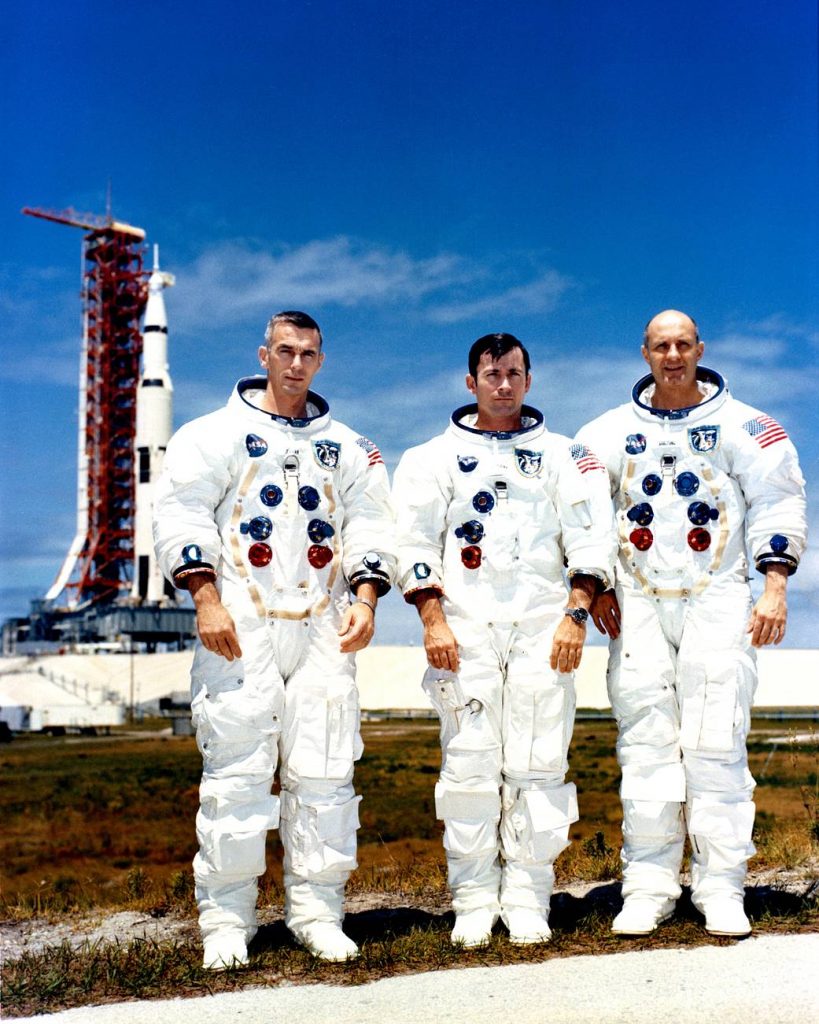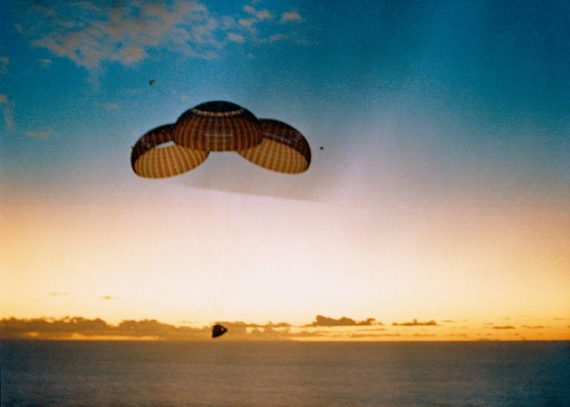
This week in rocket history we’re remembering an important step in America’s lunar landing program: Apollo 10.
Apollo 10’s goal was to do an end-to-end rehearsal of the entire Apollo Command/Service Module and Lunar Module stack in Lunar orbit in preparation for the lunar landing attempt. Commanding the mission was Tom Stafford; John Young was the command module pilot; Eugene Cernan was the lunar module pilot.
Apollo 10 was launched at 16:49 UTC on May 18, 1969, the first and only Saturn 5 launch from LC-39B. Yes, LC-39B. LC-39A, the usual launchpad for the Saturn 5, was being used for the parallel launch campaign of Apollo 11. Two rockets can’t occupy the same space so Apollo 10 had to scootch over a pad.
The launch was nominal. Two and a half hours into the mission the Saturn V third stage lit its engines for just over five and a half minutes (precisely 343 seconds) to perform a Trans Lunar Injection burn, sending the stack towards the Moon.
Twenty minutes after Trans Lunar Injection, the Command Module Charlie Brown separated from the third stage. Command Module Pilot Young performed the transposition maneuver, a fancy word for it turning around and removing the Lunar Module Snoopy from where it was stored on the third stage. The process was broadcast to TV live.
The cruise to the Moon was also nominal with a fifteen meters per second midcourse correction. This maneuver was so accurate that the two other planned corrections were canceled.
Almost 76 hours into the mission, the Command/Service Module engine fired for just under six minutes to insert the stack into Lunar orbit. The crew did a live TV broadcast four hours later showing viewers details on the lunar surface.

Cernan and Stafford entered the Lunar Module 95 hours into the mission to activate systems and prepare for their solo spacecraft demonstration. Three and a half hours later, they undocked. The two crew members in the Lunar Module checked out its systems and extended the legs. After a few minutes, Young in the Command Module performed an 8.3-second burn of the Reaction Control Thrusters on his spacecraft to increase the separation between the two spacecraft. He then flew around Snoopy for a visual inspection.
Once the inspection was complete, Young performed another burn to move the Command/Service Module a kilometer away from the Lunar Module.
One hour after undocking from the Command/Service Module, the Lunar Module lowered its orbit around the Moon. In this lower orbit, the crew passed directly over the planned landing site for Apollo 11 and took many pictures. The two astronauts were so distracted by looking at the lunar surface that they briefly forgot to fly the spacecraft, letting it drift out of yaw alignment slightly. They also tested the landing radar during this orbit. According to their measurements, the closest they ever got to the lunar surface was just under 14.5 kilometers.
You might be wondering why they didn’t land. Quite simply, they couldn’t. The ascent stage on the Lunar Module was deliberately under-fueled. If Cernan and Stafford were to land on the Moon, they wouldn’t have enough fuel to be able to return to the Command/Service Module in orbit. Remember: Apollo 10 was never meant to land on the Moon, just to act as a dress rehearsal for the real thing.
The next step was to rendezvous with the Command Module. All went well for the first three hours. And then Stafford and Cernan realized they had a problem when the spacecraft started rolling erratically. The cause? The abort guidance computer. It was set incorrectly: instead of being in attitude hold mode, it was in auto mode. Essentially the spacecraft was rolling around trying to lock on to the Command Module with its radar when it shouldn’t have. Cernan re-established control manually, with only a brief “we’re in trouble” to relay any sign of concern for the mission.

The Lunar Module performed another burn to simulate the orbit that a Lunar Module would be in after ascent from the lunar surface. After this, the engines were lit for a second burn to raise its orbit back up to the apogee of the Command Module. After a series of other rendezvous burns and phasing, docking was completed three hours and 22 minutes later, and Stafford and Cernan transferred exposed film and other supplies into Charlie Brown. The Lunar Module Ascent stage was jettisoned shortly afterward.
Twenty-eight minutes later, the ascent stage engine of the Lunar Module was remotely commanded to burn to depletion which sent the spacecraft into solar orbit.
At 137 hours and 39 minutes into the flight, the trans-Earth initiation burn was conducted, sending Apollo 10 to an ocean landing. During the trip back, the crew passed the time with six TV transmissions and several celestial navigation exercises.
The astronauts began their reentry into Earth’s atmosphere nearly eight days into the mission. Splashdown and the end of the mission were achieved at 192 hours, three minutes, and 23 seconds. The crew was retrieved by a helicopter from the USS Princeton, arriving onboard 39 minutes after splashdown.
More Information
Apollo 10 (NASA History)
Nelson, Craig (2009). Rocket Men: The Epic Story of the First Men on the Moon. New York: Viking. ISBN 978-0-670-02103-1, p14.
Apollo Fight Journal (NASA History)
Launch video




 Join the Crew!
Join the Crew!
 Escape Velocity Space News
Escape Velocity Space News
0 Comments